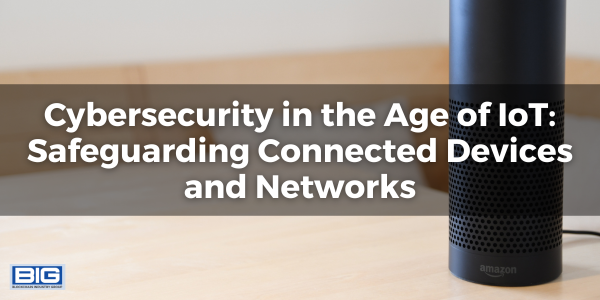
The rapid growth of the Internet of Things (IoT) has transformed the way we live and work, connecting various devices and systems to enhance efficiency and convenience. However, this interconnectedness also introduces new cybersecurity risks.
This article delves into the importance of cybersecurity in the age of IoT and provides insights into safeguarding connected devices and networks. By understanding the challenges and implementing robust security measures, individuals and organizations can navigate the IoT landscape while protecting their data and privacy.
The Expanding IoT Landscape: A Paradigm Shift in Connectivity
The IoT ecosystem encompasses a wide range of devices, including smart home appliances, wearables, industrial sensors, and critical infrastructure components. The proliferation of these connected devices has significantly expanded the attack surface for cybercriminals. Understanding the magnitude of this interconnected landscape is crucial in recognizing the need for effective cybersecurity measures.
Understanding IoT Security Risks: The Vulnerabilities Within
Connected devices and networks within the IoT environment are susceptible to various security risks. Understanding these vulnerabilities is essential in mitigating potential threats and protecting sensitive data. Some common security risks include:
- Weak Authentication and Authorization: Many IoT devices lack strong authentication mechanisms, making them easy targets for unauthorized access and data breaches.
- Inadequate Encryption: Insufficient encryption protocols can expose sensitive information during transmission, allowing attackers to intercept and compromise data.
- Lack of Device Patching: IoT devices often lack proper patching mechanisms, making them vulnerable to known vulnerabilities and exploits.
- Insecure Network Configurations: Improper network configurations, such as weak passwords or unsecured Wi-Fi networks, can expose devices to unauthorized access and control.
- Data Privacy Concerns: IoT devices collect and transmit vast amounts of personal data. Insufficient privacy protections can lead to data breaches and potential misuse of sensitive information.
Implementing IoT Security Best Practices: Safeguarding the Connected World
To enhance cybersecurity in the age of IoT, it is crucial to adopt comprehensive security practices. The following measures can help protect connected devices and networks from potential threats:
- Strong Authentication and Access Controls: Implement multi-factor authentication and robust access controls to ensure only authorized individuals can access IoT devices and systems.
- End-to-End Encryption: Employ strong encryption protocols to protect data both in transit and at rest, ensuring that sensitive information remains secure.
- Regular Patching and Updates: Keep IoT devices up to date with the latest firmware and security patches to address known vulnerabilities and mitigate potential risks.
- Network Segmentation: Separate IoT devices into isolated network segments to prevent unauthorized access to critical systems and data.
- Monitoring and Detection: Implement robust monitoring systems to detect and respond to suspicious activities, such as unauthorized access attempts or abnormal data transmissions.
- Data Privacy and Consent: Clearly communicate data collection and usage practices to users, obtaining their informed consent, and ensuring compliance with privacy regulations.
48 Innovative Low-Code, No-Code Companies
—
5 Benefits of Low Code, No Code Technology
—
5 Technologies to Reduce Income Disparity
Real-World Examples: Lessons Learned
Examining real-world examples of IoT-related cybersecurity incidents can provide valuable insights into the potential risks and their consequences. For instance:
- Mirai Botnet: The Mirai botnet targeted vulnerable IoT devices, infecting them and turning them into a massive botnet army. The attack disrupted numerous websites and highlighted the importance of securing IoT devices against botnet threats.
- Smart Home Camera Vulnerabilities: Vulnerabilities in smart home cameras have led to privacy breaches, allowing unauthorized individuals to access live video feeds. These incidents emphasize the need for strong authentication and encryption mechanisms for connected cameras.
- Industrial Control System Attacks: Cyberattacks on critical infrastructure, such as power grids and water treatment plants, have demonstrated the potential physical consequences of IoT security implications. Protecting these systems is crucial to prevent potentially catastrophic disruptions.
Navigating the IoT Security Landscape
As the Internet of Things continues to expand, cybersecurity becomes paramount in safeguarding connected devices and networks. Understanding the vulnerabilities within the IoT ecosystem and implementing robust security practices are essential for individuals and organizations alike. By prioritizing strong authentication, encryption, regular updates, network segmentation, monitoring, and data privacy, we can mitigate the risks associated with IoT and protect our data and privacy.



